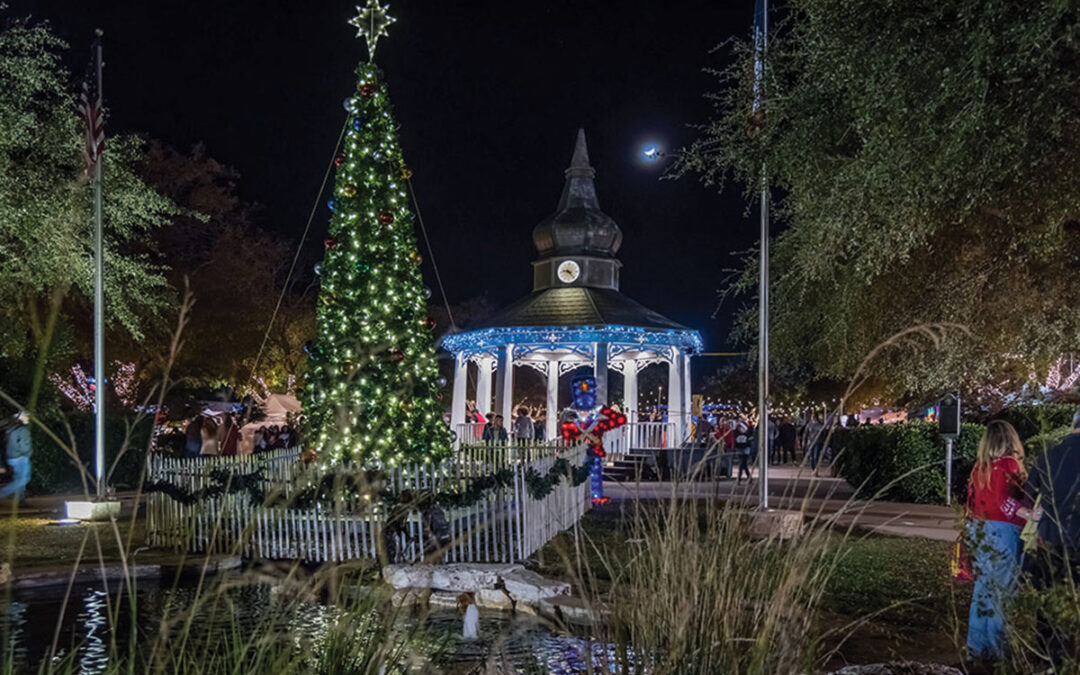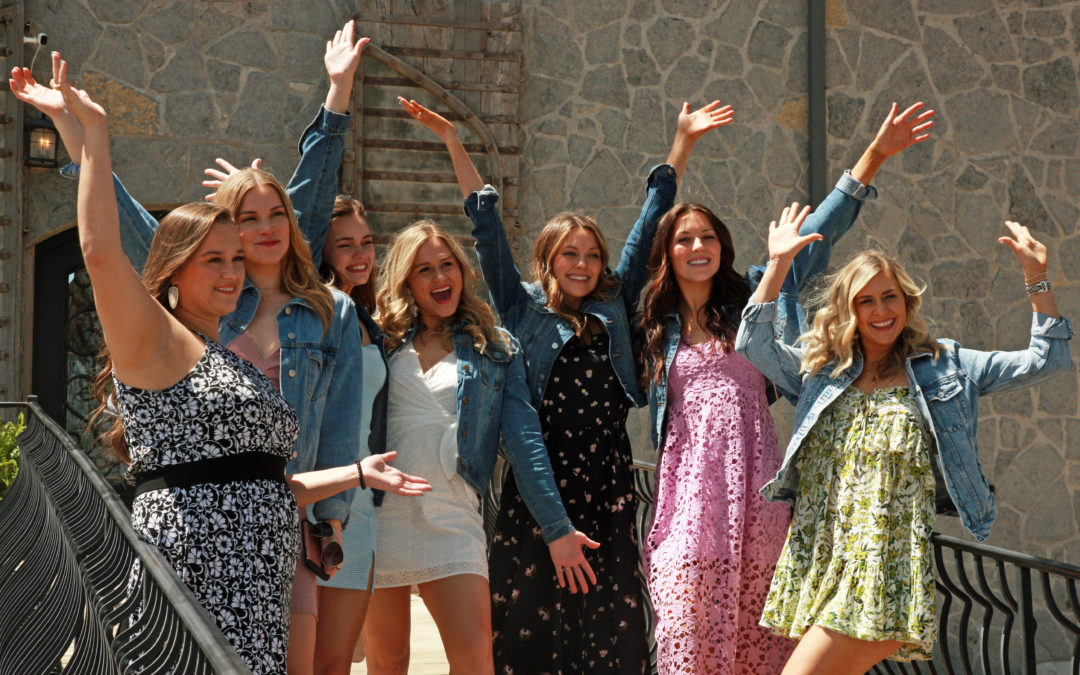Making a Big Splash!
This small German-heritage community on the Comal River has a large water park and a big future.
Lately, San Antonio’s neighboring city of New Braunfels is making a big splash on the local scene — and not only because it’s home to Schlitterbahn Water Park, Wurstfest and “tubing” on rambling rivers. The positive attention isn’t coming just from those who consider it another pretty little bedroom community to San Antonio either. No, New Braunfels is becoming ever more popular with visitors, residents, retirees and young couples coming to raise families there. This 168-year-old Texas town is seeing a surge in growth and is now more fun and exciting than ever.
Not just the Wurst destination
Along Interstate 35 between San Antonio and Austin, several small towns have enjoyed an increase in growth and prosperity over the past 25 years, but perhaps none has grown and changed as dramatically as New Braunfels. Once a sleepy little German-heritage town, New Braunfels now offers more than ever. Today it’s a hip, thriving destination city with big-city style and amenities. With a population of more than 60,000 residents, the city is located in an area that stretches into both Guadalupe and Comal Counties and rests just 20 miles north of San Antonio on I-35. A scenic gateway city to the Texas Hill Country, the town is rich with the culture and heritage of its early German immigrant settlers.
“I always tell people that I’m proud to be mayor of such a wonderful city. In New Braunfels, we are blessed with two beautiful rivers [the Comal and the Guadalupe], lots of graceful oak trees and one of the prettiest parks [Landa Park] in the area,” says Mayor Gale Pospisil. “Although large in population, New Braunfels still has that special small-town feeling and many examples of the German heritage that typify our town. Here, the living is good because we have the charm of a small community and the convenience of a large urban area. We have a vibrant downtown, a growing economy, great neighborhoods, two highly regarded school systems and citizens who make New Braunfels special by their exceptional volunteerism.”
German roots
Established in 1845 by Prince Carl Solms of Braunfels, Germany, New Braunfels grew rapidly in its early years: By 1850, it was the fourth-largest city (by population) in Texas, behind only Galveston, San Antonio and Houston. Of course, these days New Braunfels is not one of Texas’ largest cities, but that’s more than all right with local residents, who say the growth has occurred at just the right speed — locals still know their neighbors and local merchants, yet the town is large enough to support numerous shops and shopping centers, restaurants, movie theaters, entertainment venues, parks and outdoor adventure spots. Better still, the city sits so close to San Antonio, San Marcos and Austin that anything else residents might want is close at hand.
The inner circle
New Braunfels’ prettiest feature may be in the center of town, where roads encircle a small park and gazebo that rest across the street from the city’s stately white limestone courthouse. Downtown, old storefront buildings have been painted and restored and now hold delightful little antique stores, coffee shops, art galleries and even a traditional old-fashioned hardware store. Restaurants, pubs and bakeries line the blocks, and home interior boutiques sit next to a cupcake shop. The town’s original 1940s Art Deco movie theater, the Brauntex, now home to live theater, music and stage performances, stands next to a railroad track and a charming little railroad museum. Across the street, kids paint ceramics at the Bisque Bakery. Behind that business sits one of New Braunfels’ most popular restaurants, the Huisache Grill, where farm-to-table fare pleases guests and little shops rest on the grounds. The Pour House beer garden and music venue across the street is also a happening spot for locals.
Old meets new
Several of New Braunfels’ downtown buildings have been repurposed and restored to create popular restaurants and bars — like the former federal post office building erected in 1915, which is now McAdoo’s Seafood Company and Bar. Likewise, the old Palace movie theater building that still stands on N. Castell Street is home to Myron’s Steakhouse, where prime steaks are served. Myron’s has a second restaurant in San Antonio these days, but the New Braunfels location came first. Even the former City Hall was home to a restaurant called the Liberty Bistro, but it recently closed and plans are underway for a new business in that building. One of the most famous businesses in New Braunfels is the oldest continuously operating bakery in the state of Texas: Naegelin’s, which opened in 1868. Each day fresh apple and cherry strudel, bread, kolaches, doughnuts, cakes, cookies, gingerbread men, petit fours and more come from its kitchen.
Historic buildings in and around downtown also include hotels like the Faust, built in 1929, and the 1898 Prince Solms Inn, an elegant Old World-style small brick building with its Uptown Piano Bar in the basement.
While there is a great deal going on within a few blocks of the downtown circle, drive just a mile or two, and you’ll find even more wonderful places to explore, including Landa Park with its Landa Lake swimming area and boat house and a kiddie train ride. On the grounds of Landa Park, be sure to check out the Circle Arts Theatre with its small stage theater productions. Nearby, the grounds of the annual German sausage festival, Wurstfest, sprawl along the banks of the Guadalupe River. Wurstfest is New Braunfels’ biggest annual celebration — a 10-day festival held each year at the end of October into early November, a family-friendly event dating back to 1961. Other not-to-be-missed places to visit while in town include the New Braunfels Smokehouse and Oma’s Haus, both known for delicious sausage, German potato salad, sauerkraut, smoked meats and more.
Water, water, everywhere!
When South Texas temperatures climb each summer, New Braunfels is the place to be. Home to Texas’ largest water park, Schlitterbahn, as well as the Texas Ski Ranch 70-acre action sports and water-ski center, here everyone likes to jump in an inner tube and float on the Comal and Guadalupe Rivers.
“Tubing on the rivers, Schlitterbahn, Gruene Historic District, Wurstfest, Wassailfest, and Wein and Sangerfest are just a few of the attractions and festivals that make New Braunfels special,” says Mayor Pospisil.
Gruene with envy
Even those who haven’t spent much time in New Braunfels have heard of its not-so-well-kept secret, the nearby hamlet of Gruene. Once a sleepy “ghost town” with an empty General Store building, a saddle shop and an old dance hall, today Gruene (pronounced green) is a bustling tourist destination. It is also still home to Texas’ oldest and perhaps most charming dance hall, Gruene Hall, where stars like Willie Nelson have played and John Travolta has danced.
The Grist Mill Restaurant, a winery, coffee shops, a tearoom, pottery shop and more line the pretty tree-shaded streets of Gruene, which rests atop a ridge overlooking the Guadalupe River. With live music in the dance hall every weekend and something to do every day, Gruene attracts visitors and locals alike and is just another reason people love living in New Braunfels.
A great place to live
“In 1986, I was in a position to choose anywhere in the state of Texas to open my law practice,” says 274th District Court Judge Gary Steel. “After months of investigation it was obvious to my wife, M’Liss, and me that the city of New Braunfels on both the Guadalupe and Comal Rivers was that place. After almost 30 years and after having raised our three children in this beautiful town, we think moving to New Braunfels has become one of the best decisions we ever made.”









0 Comments